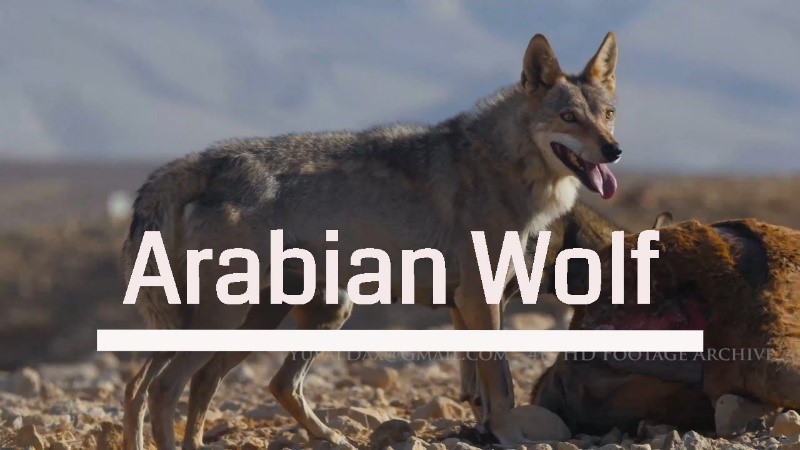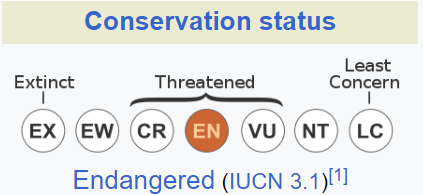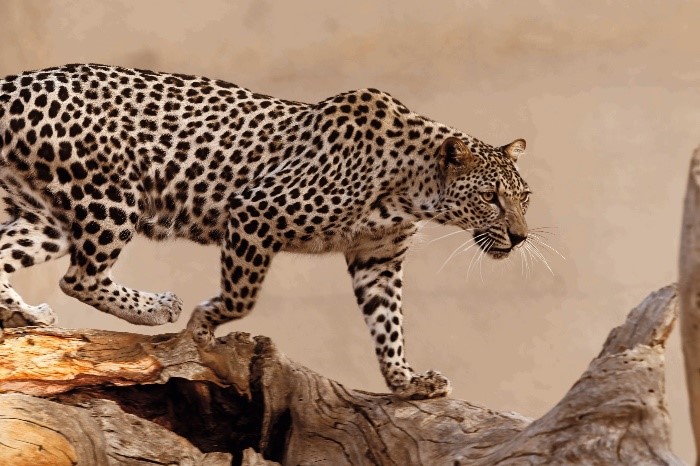Dhib and Nimr

Disclaimer: Copyright infringement not intended.
In News
- The Arabian wolf (Canis lupus arabs) and the Arabian leopard (Panthera pardus nimr) are found across the whole of the Arabian Peninsula.
- Dhib and Nimr are the Arabic terms for the two animals that have featured in the culture and folklore of the region’s peoples.
Arabian wolf
About
- The Arabian wolf (Canis lupus arabs) is a subspecies of Gray Wolf.
Distribution
- It is native to the Arabian Peninsula—to the west of Bahrain, as well as Oman, southern Saudi Arabia, and Yemen.
- They are also found in Israel’s Negev Desert, Jordan, Palestine and the Sinai Peninsula.
Features
- It is the smallest wolf subspecies.
- It is smaller than other wolves to help it adapt to life in a hot, dry climate. This is an example of Bergmann's rule, in which mammal size varies by the warmth of their environment.
- Its ears are proportionally larger in relation to its body size when compared to other sub-species of Canis lupus, an adaptation developed to help disperse body heat (Allen's Rule).
- It is a specialized xerocole (arid-adapted) animal that normally lives in smaller familial packs.
Diet
- Arabian wolves are omnivorous and opportunistic eaters.
- They consume small to medium-sized prey, from insects, reptiles, and birds to rodents and small ungulates, such as young ibex and several species of gazelle.

Protection
- They are strongly protected under Israel's 1955 Wildlife Protection Law.

Arabian Leopard
About
- The Arabian leopard (Panthera pardus nimr) is a leopard subspecies.
Location
- It is native to the Arabian Peninsula.
- The Arabian leopard is the smallest leopard subspecies.
Characteristics
- The Arabian leopard's fur varies from pale yellow to deep golden, tawny or grey and is patterned with rosettes.
- The Arabian leopard is smaller than both African and Persian leopards.
- It is however the largest cat in the Arabian Peninsula.
Distribution and Habitat
- The geographic range of the Arabian leopard is limited to the Arabian Peninsula, including Egypt's Sinai Peninsula.
- It lives in mountainous uplands and hilly steppes but seldom moves to open plains, desert, or coastal lowlands.
- It prefers well-vegetated terrain that is difficult for humans to reach.
Ecology and behaviour
- Arabian leopards are predominantly nocturnal, but are sometimes also seen in daylight.
- They seem to concentrate on small to medium prey species.
Threats
- The Arabian leopard is threatened by
- habitat loss,
- degradation and fragmentation;
- prey depletion caused by unregulated hunting;
- trapping for the illegal wildlife trade and
- retaliatory killing in defense of livestock.
Status
- It has been listed as Critically Endangered on the IUCN Red List since 1996.
- Fewer than 200 wild individuals were estimated to be alive in 2006.
- The population is severely fragmented. Subpopulations are isolated and not larger than 50 mature individuals. The population is thought to decline continuously.
Conservation
- The Arabian leopard is listed in CITES Appendix I.
- Captive leopard in the Breeding Centre for Endangered Wildlife, Sharjah.
|
PRACTICE QUESTION Q. Bergmann's rule is related to which of the following? 1.Animals become active during twilight hours, i.e., during dawn and dusk to adapt to nocturnal life. 2.Animals adapted to cold climates have shorter and thicker limbs and bodily appendages than animals adapted to warm climates. 3.Species of larger size are found in colder environments, while populations and species of smaller size are found in warmer regions. 4.Within a species of endotherms, more heavily pigmented forms tend to be found in more humid environments, e.g., near the equator. Choose the correct code. 1. A 2. B 3. C 4. D Answer Option 3. C Crepuscular Animals The average daytime temperatures in the desert often exceed more than 38°C. Nocturnal lifestyle helps to cut down the loss of water, especially in desert biomes. It also enhances osmoregulation. Some animals become active during twilight hours, i.e., during dawn and dusk. Such animals are called crepuscular animals. Allen's rule is an ecogeographical rule formulated by Joel Asaph Allen in 1877, broadly stating that animals adapted to cold climates have shorter and thicker limbs and bodily appendages than animals adapted to warm climates. Bergmann's rule is an ecogeographical rule that states that within a broadly distributed taxonomic clade, populations and species of larger size are found in colder environments, while populations and species of smaller size are found in warmer regions. Gloger's rule is an ecogeographical rule that states that within a species of endotherms, more heavily pigmented forms tend to be found in more humid environments, e.g. near the equator. |





1.png)
